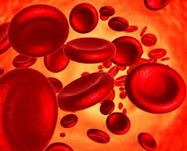Causas de anemia y relación de la hemoglobina con la edad en una población geriátrica
Keywords:
GERIATRÍA, ANEMIA, SERVICIOS DE SALUD PARA ANCIANOS, HEMOGLOBINAS.Abstract
Introducción: la deficiencia de hierro y/o ácido fólico son frecuentes en los ancianos y son causas de anemia en los mismos, lo que constituye uno de los problemas geriátricos mas frecuentes, sin embargo, la existencia de trastornos inflamatorios o infecciosos crónicos es la causa de anemia más frecuente en los mismos.
Método: se realizó la determinación de la cifra de hemoglobina a 62 ancianos comparándose los resultados con un grupo de individuos jóvenes sanos. En aquellos con anemia se realizaron investigaciones encaminadas a su clasificación, así como la identificación de su causa.
Resultados: la cifra promedio de hemoglobina no tuvo diferencia con la población joven y la presencia de anemia fue frecuente entre los ancianos estudiados. La causa más frecuente fue la “anemia de trastornos crónicos”. La deficiencia de hierro, vitamina B12 y/o ácido fólico fueron poco frecuentes.
Conclusiones: las cifras promedio de hemoglobina en los ancianos no difieren de las de la población joven ni varía con el género, aunque disminuye con la edad. La causa más frecuente de anemia en los ancianos es la anemia de trastornos crónicos.
Downloads
References
1.- Guralnik J M, Eisenstaedt R S, Ferrucci L, Klein H G, Woodman R C. Prevalence of anemia in persons 65 years and older in the United States: evidence for a high rate of unexplained anemia. Blood 2004;104:2263-8 http://www.bloodjournal.org/content/104/8/2263?sso-checked=true
2.- Ferrucci L, Guralnik J M, Bandinelli S. Unexplained anaemia in older persons is characterised by low erythropeietin and low levels of pro- inflammatory markers. Br J Haematol. 2007 Mar; 136:849-55 https://www.ncbi.nlm.nih.gov/pmc/articles/PMC2669300/
3.- Corrêa M, Baldessar M Z, Fissmer J F. Prevalência das anemias em pacientes hospitalizados. ACM 2004;33(1):36-41 http://www.acm.org.br/revista/pdf/artigos/171.pdf
4.- Price E A, Schrier S L. Unexplained Aspects of Anemia of Inflammation. Adv Hematol 2010;2010:508739 https://www.ncbi.nlm.nih.gov/pmc/articles/PMC2846342/
5.- Cartright G E, Wintrobe M M. The anemia of infection. Adv Intern Med 1952; 5:165-70.
6.- Erlev A. anemia of chronic disease. En: Beutler E, Lichtman M A, Cooller B S, Kipps T J. Williams Hematology 5ta ed. New York Mc Graw –Hill 2006 pp518-24
7.- Douglas SW Adanson JW. The anemia of chronic disorders: Studies of Marrow Regulation and Iron Metabolism. Bood.1975; 45(1): 55-65 https://pdfs.semanticscholar.org/dc47/d4b700e5ab87d1767451245108542988f32e.pdf
8.- Ferrucci L, Fuelnik J M, Woodman R C et al. Proinflammatory state and circulating erythropoietin in persons with and without anemia. Am J Med 2005; 118(11) 1288-92 https://www.sciencedirect.com/science/article/pii/S0002934305005036
9.- Musso Arturo Mario. Anemia en el adulto mayor. Acta bioquím. clín. latinoam. [Internet]. 2017 Sep [citado 2018 Jun 20] ; 51( 3 ): 319-324. Disponible en: http://www.scielo.org.ar/scielo.php?script=sci_arttext&pid=S0325-29572017000300006
10.- Bichara VM. Anemia como indicador pronóstico en insuficiencia cardíaca. Insuf Card 2016; 11 /2): 68-77 http://www.scielo.org.ar/pdf/ic/v11n2/v11n2a04.pdf
11.- Camaschella C. Iron-Deficiency Anemia. N Engl J Med 2015; 372:1832-43. http://legeforeningen.no/PageFiles/214782/2015CamaschellaNEJM%20Iron-def%20anemia.pdf
12.- Características y consecuencias de la anemia en ancianos. Rev. Fac. Med. (Méx.) [revista en la Internet]. 2013 Dic [citado 2018 Jun 20] ; 56( 6 ): 54-58. Disponible en: http://www.scielo.org.mx/scielo.php?script=sci_arttext&pid=S0026-17422013000900009
13.- Martínez Rey C., González Quintela A., Domínguez Santalla M.J., Fernández Castroagudín J., Lorenzo Zúñiga V.. Patología digestiva alta en pacientes de edad avanzada con anemia ferropénica: comparación entre usuarios y no usuarios de anti-inflamatorios no esteroideos. An. Med. Interna (Madrid) [Internet]. 2001 Jul [citado 2018 Jun 20] ; 18( 7 ): 17-20. Disponible en: http://scielo.isciii.es/scielo.php?script=sci_arttext&pid=S0212-71992001000700003
14.- Zuckerman K S. Approach to the anemias. En: Goldman: Cecil Textbook of Medicina, 21st ed. Saunders Company, Phladelphia. 2000 pp 2127-52
15.- Kautz L, Jung G, Nemeth E, et al: Erythroferrone contributes to recovery from
anemia of inflammation. Blood 2014 oct.;124(16): 2569–74 https://pdfs.semanticscholar.org/bdc3/fff28a214826eaf36ccf50db76fb9a482d20.pdf

Published
How to Cite
Issue
Section
License
Authors who have publications with this journal agree to the following terms: Authors will retain their copyrights and grant the journal the right of first publication of their work, which will be publication of their work, which will be simultaneously subject to the Creative Commons Attribution License (CC-BY-NC 4.0) that allows third parties to share the work as long as its author and first publication in this journal are indicated.
Authors may adopt other non-exclusive license agreements for distribution of the published version of the work (e.g.: deposit it in an institutional telematic archive or publish it in a volume). Likewise, and according to the recommendations of the Medical Sciences Editorial (ECIMED), authors must declare in each article their contribution according to the CRediT taxonomy (contributor roles). This taxonomy includes 14 roles, which can be used to represent the tasks typically performed by contributors in scientific academic production. It should be consulted in monograph) whenever initial publication in this journal is indicated. Authors are allowed and encouraged to disseminate their work through the Internet (e.g., in institutional telematic archives or on their web page) before and during the submission process, which may produce interesting exchanges and increase citations of the published work. (See The effect of open access). https://casrai.org/credit/


